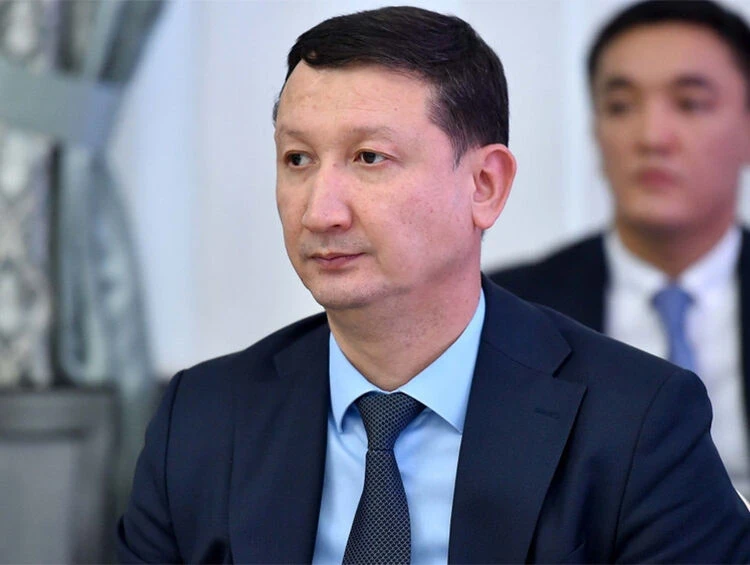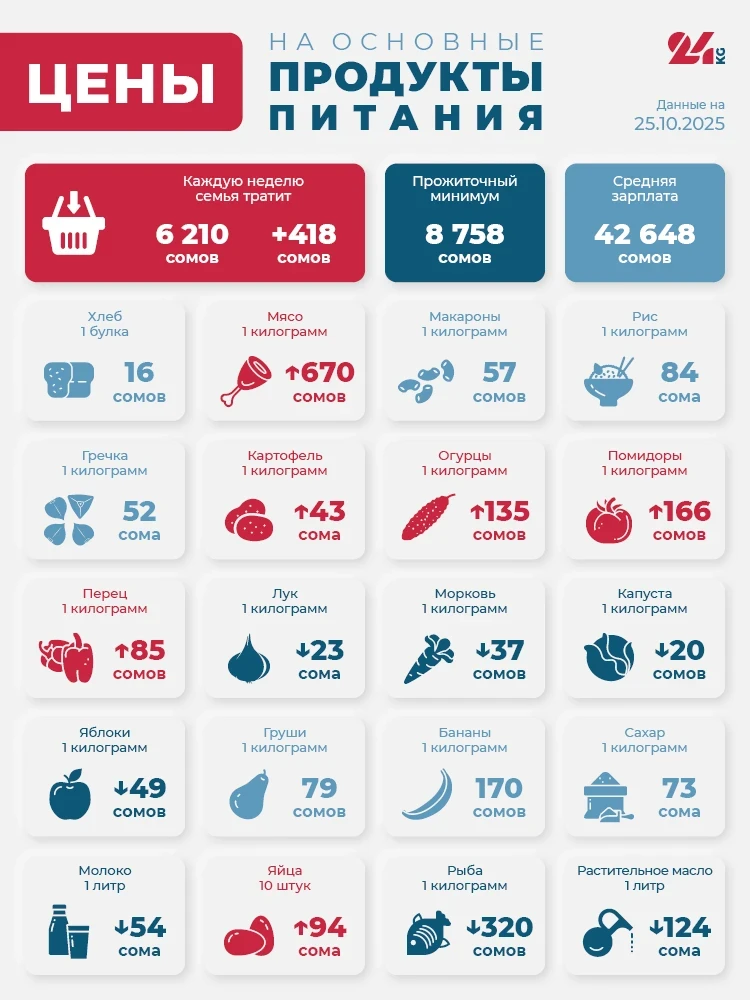Baktiyar Aliyev, head of the Social Fund, informed 24.kg about how pensions have changed for various groups of the population, as well as the introduction of a minimum work experience requirement and the potential impact of the self-dissolution of the Jogorku Kenesh on pension payments.
— Can you tell us how pension amounts have changed and how many people received an increase?
— Starting from 2021, the Social Fund has significantly increased pension amounts. Previously, increases were only 100–200 soms, but now there is a much more substantial growth.
For example, in 2020, the average pension was about 6,000 soms, and today it is 11,226 soms, which is almost twice as much.
Earlier, there were also pensions of 700 and 1,000 soms in the country, but such amounts are no longer available.
The increase in pensions occurred in stages:
- In 2022, pensions increased by 33 percent;
- In 2023, the insurance part increased by 38 percent;
- In 2024, pensions will be brought up to the level of the subsistence minimum for pensioners — 6,900 soms, while the insurance part will increase by 18 percent;
- In 2025, the insurance part will grow by 10 percent, but not less than 600 soms, and the minimum pension amount will be 7,200 soms.
As a result, most pensioners received an increase ranging from 1,500 to 5,000 soms.
To understand the situation: until 2021, about 47 billion soms were allocated annually for pension payments, and from 2021 to 2025, this amount will increase to 106 billion soms, which means an increase in expenses of 59 billion soms.
It is important to note that a pension is not a benefit but an insurance payment. Its amount depends on the insurance contributions that citizens paid during their working life.
The more contributions that come into the Social Fund, the higher the pension amount.
The indexing carried out on October 1, 2025, affected everyone who received pensions before this date — about 813,000 people.
— What are the expenses for pension payments since the beginning of 2025, and how is this amount formed? How sustainable is the funding in the future?
— Funding is provided through insurance contributions and allocations from the state budget.
According to preliminary data, the total amount of pension and benefit payments for 10 months of 2025 (as of October 23) amounted to 90.8 billion soms.
Of this amount, 36.4 billion soms came from the republican budget, including:
- 27 billion soms for the payment of the basic part of the pension;
- 4.1 billion soms for pensions and benefits for military personnel;
- 5.3 billion soms for preferential pensions and allowances.
Additionally, 54.4 billion soms was financed from the Pension Fund, which consists of insurance contributions from working citizens and employers.
[b]— Many employers have debts for social contributions. What measures are applied to debtors — lawsuits, fines, installments? How does this affect the fund's ability to pay pensions?[/b>
— At the moment, we are fully and timely paying pensions.
Since January 1, 2019, the Tax Service has been responsible for collecting insurance contributions and holding accountable those who violate this area.
In case of non-payment or partial payment of contributions, recovery measures are taken in accordance with the Tax Code and the Code of Offenses. For example, payment demands are issued to banks, funds may be confiscated from the taxpayer's property, and installments or deferrals are provided, as well as fines and penalties.
[b]— How will the delay in adopting the budget for 2026 affect pension payments? Does the fund have a buffer?[/b>
— According to the Budget Code, if the budget project is not approved by the end of the year, the cabinet of ministers and local self-government bodies may spend funds monthly within one-twelfth of the annual amount specified in the budget project.
Due to the self-dissolution of the Jogorku Kenesh, according to the presidential decree of October 13, 2025, the Social Fund is allowed to operate under this scheme starting January 1, 2026, until the budget law comes into effect.
Moreover, the budget of the Social Fund adheres to the principle of balance, which guarantees timely pension payments without delays.
[b]— What awaits people who do not have the required work experience to retire, considering its gradual increase to 20 years?[/b>
— As part of the pension system reform, a requirement for a minimum insurance experience has been introduced, aimed at strengthening the insurance principles of pension assignment, ensuring a decent standard of living for pensioners, and maintaining the financial sustainability of the system.
The minimum work experience will be gradually increased, starting from five years in 2024 and reaching 20 years by 2045.
The retirement age remains unchanged.
This measure is intended to ensure full participation of citizens in the state social insurance system. Previously, there were no requirements for work experience, allowing individuals to retire even with minimal work experience. As a result, pension amounts were insignificant, causing dissatisfaction among the population.
Compliance with the minimum insurance experience plays a crucial role, as the pension amount depends on the sum and period of insurance contributions paid.
Read more on the topic Deputy: Why do people with 30 years of work experience receive the minimum pension?
In most countries around the world and in the CIS, the minimum required work experience ranges from 10 to 25 years.
The gradual increase of the work experience from 5 to 20 years will enhance the responsibility of working citizens for their future and create pension rights, which will help solve the problem of low pensions.
Additionally, this is a step towards legalizing citizens' employment. The level of the shadow economy and informal employment in Kyrgyzstan remains high.
In 2023, the share of the shadow economy was 19 percent of the gross domestic product (GDP), and 66.1 percent of the employed population of the republic works in the informal sector.
Informal employment deprives citizens of rights to pension provision, which is based on the insurance principle and depends on the period of contributions paid and the accumulated amount in the personal insurance account.
Individuals who are not entitled to a pension can only rely on a benefit for elderly citizens, which amounts to only 2,000 soms and is paid from the republican budget.
Furthermore, working without proper registration deprives people of medical insurance and other social payments (sick leave, maternity benefits, etc.).
Currently, measures are being taken to reduce the level of informal employment. Thus, in 2023, to create favorable conditions for business, the rates of insurance contributions for individual entrepreneurs were set at 6 percent of the truncated average monthly salary (AMS). In 2024, to support entrepreneurs and bring insurance contributions out of the shadows, the rate was reduced from 27.25 to 12.25 percent, which is more than 55 percent, and is a unique step in international practice.
Read more on the topic The Jogorku Kenesh intends to reduce insurance contributions for working pensioners
Additionally, citizens can voluntarily pay insurance contributions in any amount, but not less than 8 percent of the AMS to the Pension Fund or not less than 10 percent of the AMS: 8 percent to the Pension Fund and 2 percent to the State Accumulation Pension Fund.
Recently, changes were made to the legislation on state social insurance, and it is too early to say what impact they will have on the pension system.
Nevertheless, considering the social, economic, and demographic realities, adjustments to the state social insurance and pension provision system will continue.

















